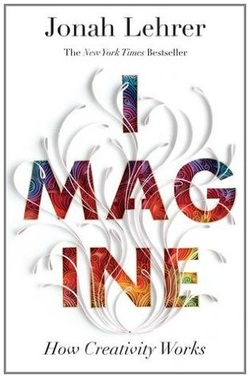
Evonne Goolagong, a stand-out women’s Grand Slam tennis player from Australia in the early 1970’s, was held back from greatness, by her own accounting, by her all too frequent mid-match “walk-abouts.” She used this Australian colloquialism to refer to her loosing concentration when the match was on the line. Like Evonne, Jonah Lehrer, despite my five stars, could have achieved even more with his wonderful “Imagine.” Unfortunately, in the middle of the first third of the book he went on a walk-about by being inconsistent with his premise and somehow unintentionally underscoring the disconnect between mind altering drugs and meaningful creativity.
But I digress. This is like perseverating on whether the model for the Mona Lisa was cross-eyed. The central point is that Lehrer has written a great book for those interested in knowing why and how man creates.
The power of a new pair of eyes, whether they are an outsider’s or yours freed from the constraints of your own expert consistency, is perhaps the single strongest tool to innovation. In my work, this means bringing folks from all sectors together to think about education outcomes, for example. The power of “not knowing it can’t be done” should never be underestimated.
“Imagine” is rich with examples – from the invention of post-its to the creative multi-part cocoon of Pixar. One of my favorite examples is the InnoCentive website. Founded by Eli Lilly in trying to understand which problems were unsolvable in its search for breakthrough drugs. With millions in R&D spending, how to allocate resources is key. But if technical issues your scientists said were impossible were actually possible (think education, poverty etc. where all the experts of the last generation seem stumped), then you could predict outcomes much more readily. To tap these outside eyes, they set up a website where Eli Lilly posted its hardest scientific problems online and attached a monetary reward to each problem. After a month of nothing, “the answers just started pouring in. We got great ideas from researchers we’d never heard of, pursuing angles that had never occurred to us.”
Creativity means getting out of your own way – by either avoiding walk-abouts or the preconceived constraints of expertise.
But I digress. This is like perseverating on whether the model for the Mona Lisa was cross-eyed. The central point is that Lehrer has written a great book for those interested in knowing why and how man creates.
The power of a new pair of eyes, whether they are an outsider’s or yours freed from the constraints of your own expert consistency, is perhaps the single strongest tool to innovation. In my work, this means bringing folks from all sectors together to think about education outcomes, for example. The power of “not knowing it can’t be done” should never be underestimated.
“Imagine” is rich with examples – from the invention of post-its to the creative multi-part cocoon of Pixar. One of my favorite examples is the InnoCentive website. Founded by Eli Lilly in trying to understand which problems were unsolvable in its search for breakthrough drugs. With millions in R&D spending, how to allocate resources is key. But if technical issues your scientists said were impossible were actually possible (think education, poverty etc. where all the experts of the last generation seem stumped), then you could predict outcomes much more readily. To tap these outside eyes, they set up a website where Eli Lilly posted its hardest scientific problems online and attached a monetary reward to each problem. After a month of nothing, “the answers just started pouring in. We got great ideas from researchers we’d never heard of, pursuing angles that had never occurred to us.”
Creativity means getting out of your own way – by either avoiding walk-abouts or the preconceived constraints of expertise.
To be tweeted links to my new posts -- blog, book reviews (both nonfiction and fiction), data or other recommended tools -- either go to Twitter.com and follow me @jcrubicon, or just go to my Home page and click on the Twitter button on the right, just above the tweet stream, and follow me @jcrubicon.
 RSS Feed
RSS Feed
